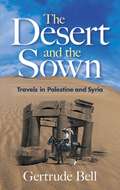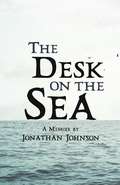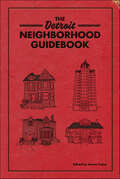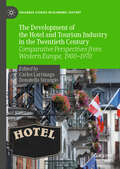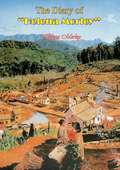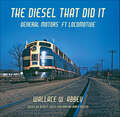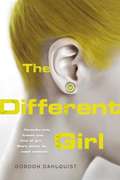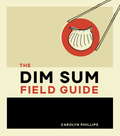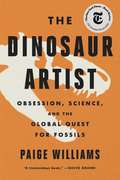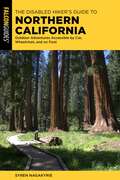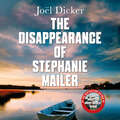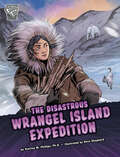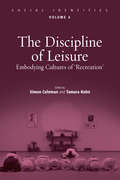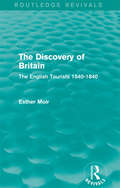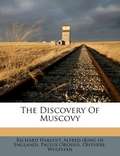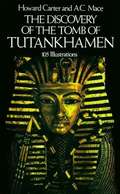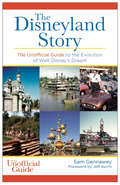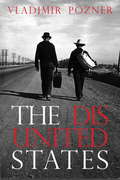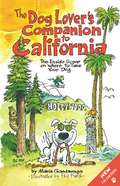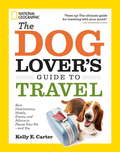- Table View
- List View
The Desert and the Sown: Travels in Palestine and Syria
by Gertrude BellBorn to transcend the social constraints of Victorian England, Gertrude Bell left the comforts of her privileged life for the unconventional — but thrilling — world of the Middle East. One of the first women to graduate from Oxford, she traveled to Persia and became passionately drawn to the Arab people, the language, and their architecture. A skilled archeologist, historian, and linguist, Bell traveled the world and wrote compelling, perceptive accounts of her daring journeys. The Desert and the Sown is considered to be one of her masterpieces. A magnificent account of personal discovery and political history, this intriguing narrative traces Bell's 1905 sojourn through Lebanon, Syria, and Palestine. With an eye for vivid detail, "the female Lawrence of Arabia" offers intriguing images from her often dangerous "wild travel" through regions never seen by another foreign woman. One hundred sixty extraordinary photos illustrate camel caravans; ruins of castles and monasteries; local markets and bazaars; Damascus with its gardens, domes, and minarets; and more. But it's Bell's impressions and conversations with contacts and confidantes of varied cultures that will hold you captive. An inspiring portrait of a woman who overcame the barriers of her generation, as well as a piece of history that offers insight into current events in the Middle East, The Desert and the Sown is fascinating reading for travelers, explorers, and citizens of the world. The book also served as the basis for the 2016 Werner Herzog film Queen of the Desert, starring Nicole Kidman, James Franco, and Robert Pattinson. Map included.
The Desk on the Sea (Made in Michigan Writers Series)
by Jonathan JohnsonThe Desk on the Sea begins four years after American poet Jonathan Johnson spread his mother’s ashes in her beloved Lake Superior and moved with his wife and young daughter into a seventeenth-century cottage on Scotland’s North Sea. On an idyllic, desolate coast and in the wild Highlands, Johnson began his search for a way to live through ongoing grief and to take in the wonder of each new day. Through years of extraordinary suffering by way of multiple ailments, Johnson’s mother, Sheila, endured an astounding number of amputations—a toe, the end of a finger, a foot, whole fingers, the other foot. What she lost in her physical being, she gained in her kindness and generosity. By the time she was told that the only way she could survive a little longer was the amputation of both hands, she was capable of giving those who loved her and herself a beautiful death instead. Inspired by her example of grace and awareness, Johnson and his family gave themselves one year on the coast of Scotland to live by Shelia’s great, guiding principle: We don’t get the days back. They wandered trails along windswept shores and past the stone ruins left by people who’d come and gone before. They played as characters from Harry Potter on deserted beaches. From their cottage, they watched an island lighthouse, counting the seconds between flashes to know exactly when to say "goodnight" so the lighthouse would answer with a wink. The Desk on the Sea is a chronicle of progress toward one man’s new life goal—to be a father, husband, and poet worthy of his mother’s legacy. Sustained by an unwavering belief that words can help us fully occupy our lives, and that imagination and empathy can transform suffering into what John Keats called "soul-making," Johnson offers readers a raw look at love and loss.
The Detroit Neighborhood Guidebook (Belt Neighborhood Guidebooks)
by Aaron FoleyAn anthology of essays and poetry exploring the Motor City&’s hidden corners—from the people who live and work there. It seems like everybody in Detroit thinks they know the city&’s neighborhoods, but because there are so many, their characteristics often become muddled and the stories that define them are often lost. Edited by Aaron Foley—author of How to Live in Detroit Without Being a Jackass—this intimate and wide-ranging collection offers revealing perspectives on a city that many people think they have figured out. A homegrown portrait about the lesser-known parts of the city, The Detroit Neighborhood Guidebook showcases the voices and people who make up Cass Corridor, West Village, Minock Park, Warrendale, Hamtramck, and almost every other spot in the city. Contributors include Zoe Villegas, Drew Philip, Hakeem Weatherspoon, Marsha Music, Ian Thibodeau, and dozens of others.
The Development of the Hotel and Tourism Industry in the Twentieth Century: Comparative Perspectives from Western Europe, 1900–1970 (Palgrave Studies in Economic History)
by Donatella Strangio Carlos LarrinagaThis edited collection explores the pivotal role of the hotel industry in building Western Europe’s tourism economy during the 20th century. The book brings together ten contributions focused on the same period, 1900-1970, to offer comparative perspectives from across the region including Italy, Switzerland, France, Spain and Britain. Drawing on historical case studies, chapters illuminate the different factors linking hotels and the broader tourism system including interventions of the public authorities and the State, the importance of private involvement, commercial strategies, the medium-term development of private hotels, hotel entrepreneurship, and the impact of economic crises and wars. By placing differing national approaches taken to the growth of the hotel industry in comparison, the book aims to fill a gap in the historiography of European hospitality and shed light on the wider impact of hotels and tourism on economic development at both a national and regional level. It will be of interest to a range of scholars, including in economic and business history, tourism studies, the history of tourism management, and social history.
The Devil Soldier: The American Soldier of Fortune Who Became a God in China
by Caleb CarrThe story of Frederick Townsend Ward, who helped win key battles for the Emperor during the Chinese Taiping Rebellion.
The Devil's Cave: Fear and superstition stalk Bruno as he grapples with his latest case (The Dordogne Mysteries #5)
by Martin Walker'WALKER'S FINEST YET ... A FIRST-RATE MYSTERY' - Entertainment WeeklyBruno, Chief of Police, investigates when a body is found floating in the river showing marks of Satanism. France's favourite cop must track down a murderer while quelling his town's superstitious fears in this page-turning mystery, part of an internationally bestselling series.It is springtime France's Périgord, a time of beauty and calm. But not for Bruno, chief of police of the small town of St Denis. A woman's body has been found on a boat, bearing signs of a black magic ritual. Bruno has too much on his plate as it is - mediating a domestic abuse case that needs careful handling and a dodgy local development proposal that seems just too good to be true. But a murder case must take precedent and the roots of this one lie buried deep in the past - linked to a chateau above a bend in the river, to the reclusive old woman who lives there, and to the secret hidden in the Devil's Cave.
The Diary of “Helena Morley”
by Elizabeth Bishop Helena MorleyOriginally published in 1942 under the title Minha Vida de Menina--Portuguese meaning "My Life as a Little Girl or "Young Girl"--this book is a diary that was kept by the author, Helena Morley (pseudonym of Alice Dayrell Caldeira Brant), when she was between the ages of twelve and fifteen (1893-1895), and living in Diamantina, a small diamond mining town in southeastern Brazil.The little girl describes her homework, her love of parades and dresses, her father who could scarcely make a living in the mines, and her most beloved grandmother.The diary was admired by French Novelist Georges Bernanos, and in 1957, award-winning American poet and writer Elizabeth Bishop, then resident in Brazil, translated it into English as The Diary of Helena Morley."The more I read the book [Minha Vida de Menina ]the better I liked it. The scenes and events it described were odd, remote, and long ago, and yet fresh, sad, funny, and eternally true. The longer I stayed on in Brazil the more Brazilian the book seemed, yet much of it could have happened in any small provincial town or village, and at almost any period of history--at least before the arrival of the automobile and the moving-picture theatre."--Elizabeth Bishop
The Diesel That Did It: General Motors' FT Locomotive (Railroads Past and Present)
by Wallace W. AbbeyThe Diesel That Did It tells the story of the legendarydiesel-electric locomotive, the FT.As war loomed in 1939, American railroads were on the precipice of railroad transformation. In an obscure factory in La Grange, Illinois, a group of gifted engineers and designers were planning a revolution that would shake railroading to its foundations and eventually put the steam locomotive out of business. Their creation, the FT, was a diesel-electric, semi-streamlined freight engine. The FT would establish a new standard for reliability, flexibility, and cost, but its arrival unsettled many railroad employees and gave fresh ammunition to their labor unions, who believed that it threatened a century-old culture.Wallace W. Abbey's The Diesel That Did It is the story of a revolution. He explores how EMC (and its successor Electro-Motive Division of General Motors) conceived the FT, and how it ultimately emerged as the dominant locomotive power plant for 20 years. However, for Abbey, the history of the Santa Fe Railway and the FT go hand in hand. The Diesel That Did It also offers a penetrating look at how the great American railroad, at the height of its Super Chief glamor, threw its conservative mechanical traditions aside to bet big on the diesel. Showcasing more than 140 exquisite photographs by Abbey and other noted photographers, The Diesel That Did It is a captivating story not to be missed by railroaders and railfans.
The Different Girl
by Gordon DahlquistVeronika. Caroline. Isobel. Eleanor. One blond, one brunette, one redhead, one with hair black as tar. Four otherwise identical girls who spend their days in sync, tasked to learn. But when May, a very different kind of girl-the lone survivor of a recent shipwreck-suddenly and mysteriously arrives on the island, an unsettling mirror is about to be held up to the life the girls have never before questioned. Sly and unsettling, Gordon Dahlquist’s timeless and evocative storytelling blurs the lines between contemporary and sci-fi with a story that is sure to linger in readers’ minds long after the final page has been turned. .
The Dim Sum Field Guide: A Taxonomy of Dumplings, Buns, Meats, Sweets, and Other Specialties of the Chinese Teahouse
by Carolyn PhillipsA whimsically illustrated yet authoritative guide to the "taxonomy" of dim sum, based on a popular Lucky Peach story.Author and illustrator Carolyn Phillips demystifies the rich, nuanced culinary institution of teahouse snacks in The Dim Sum Field Guide, a pocket-size, definitive resource featuring 80 hand-drawn illustrations. With entries for all the dim sum classics--including siu mai, xiaolongbao, char siu, roast duck, and even sweets like milk tarts and black sesame rolls--this handy reference is perfect for bringing on-the-go to your next dim sum outing. Armchair travelers and Asian food enthusiasts alike will be delighted by this detailed yet accessible look at the distinctly Chinese art of eating well.
The Dinosaur Artist: Obsession, Betrayal, and the Quest for Earth's Ultimate Trophy
by Paige WilliamsIn 2012, a New York auction catalogue boasted an unusual offering: "a superb Tyrannosaurus skeleton." In fact, Lot 49135 consisted of a nearly complete T. bataar, a close cousin to the most famous animal that ever lived. The fossils now on display in a Manhattan event space had been unearthed in Mongolia, more than 6,000 miles away. At eight-feet high and 24 feet long, the specimen was spectacular, and when the gavel sounded the winning bid was over $1 million. <p><p> Eric Prokopi, a thirty-eight-year-old Floridian, was the man who had brought this extraordinary skeleton to market. A onetime swimmer who spent his teenage years diving for shark teeth, Prokopi's singular obsession with fossils fueled a thriving business hunting, preparing, and selling specimens, to clients ranging from natural history museums to avid private collectors like actor Leonardo DiCaprio. <p> But there was a problem. This time, facing financial strain, had Prokopi gone too far? As the T. bataar went to auction, a network of paleontologists alerted the government of Mongolia to the eye-catching lot. As an international custody battle ensued, Prokopi watched as his own world unraveled. <p> In the tradition of The Orchid Thief, The Dinosaur Artist is a stunning work of narrative journalism about humans' relationship with natural history and a seemingly intractable conflict between science and commerce. A story that stretches from Florida's Land O' Lakes to the Gobi Desert, The Dinosaur Artist illuminates the history of fossil collecting--a murky, sometimes risky business, populated by eccentrics and obsessives, where the lines between poacher and hunter, collector and smuggler, enthusiast and opportunist, can easily blur. <p> In her first book, Paige Williams has given readers an irresistible story that spans continents, cultures, and millennia as she examines the question of who, ultimately, owns the past.
The Disabled Hiker's Guide to Northern California: Outdoor Adventures Accessible by Car, Wheelchair, and on Foot
by Syren NagakyrieThe Disabled Hiker&’s Guide to Northern California covers the northern region of California from approximately Santa Cruz/Monterey to the Oregon state line. This guide includes:Drive-up Adventures: Places that can be reached via car or accessible transportation that offer sweeping views or beautiful surroundings without having to go out on trail. Where trails that meet the guidelines are also available, they will be referenced and a trail guide provided.Wheelchair-Accessible Trails: Descriptions of verified wheelchair accessible trails. Trails will be reviewed for adherence to accessibility guidelines and inaccessible features will be noted (this is a fairly common occurrence). Descriptions of trail surface, grade, and detailed directions will also be provided. Wheelchair users need more information than simply listing whether a trail is &“wheelchair accessible&” or not.Hiking Trails: Listings will include trails with varying difficulty levels. The majority of trails will be in locations associated with developed recreations areas. There will also be options for backcountry or wilderness area hikes as well as lesser-known trails.
The Disappearance of Stephanie Mailer: A gripping new thriller with a killer twist
by Joël DickerA twisting new thriller from the author of The Truth about the Harry Quebert AffairIn the summer of 1994, the quiet seaside town of Orphea reels from the discovery of four murders. Two young police officers, Jesse Rosenberg and Derek Scott crack the case and identify the killer.Then, twenty years later and just as he is on the point of taking early retirement, Rosenberg is approached by Stephanie Mailer, a journalist who believes he made a mistake back in 1994 and that the real murderer is still out there, perhaps ready to strike again. But before she can give any more details, Stephanie Mailer mysteriously disappears, and Rosenberg and Scott are forced to confront the possibility that her suspicions might have been proved true.What happened to Stephanie Mailer?What did she know?And what really happened in Orphea all those years ago?TRANSLATED FROM THE FRENCH BY HOWARD CURTIS
The Disappearance of Stephanie Mailer: A gripping new thriller with a killer twist
by Joël DickerA twisting new thriller from the author of The Truth about the Harry Quebert AffairIn the summer of 1994, the quiet seaside town of Orphea reels from the discovery of two brutal murders. Confounding their superiors, two young police officers, Jesse Rosenberg and Derek Scott crack the case and arrest the murderer, earning themselves handsome promotions and the lasting respect of their colleagues.But twenty years later, just as he is on the point of taking early retirement, Rosenberg is approached by Stephanie Mailer, a journalist who believes he made a mistake back in 1994 and that the real murderer is still out there, perhaps ready to strike again. Before she can give any more details however, Stephanie Mailer mysteriously disappears without trace, and Rosenberg and Scott are forced to confront the awful possibility that her suspicions might have been proved horribly true.What happened to Stephanie Mailer?What did she know?And what really happened in Orphea all those years ago?(P)2020 Quercus Editions Limited
The Disastrous Wrangel Island Expedition (Deadly Expeditions)
by Katrina M. PhillipsIn 1921, Inupait seamstress Ada Blackjack joined a a group of four white men who wanted to establish a trading post on Wrangel Island in the freezing Arctic Ocean. The explorers were stranded on the island when their return ship was forced to turn back due to ice. Facing harsh conditions and dwindling food supplies, the men died one by one, but Ada remained. Find out how she alone managed to survive the disastrous expedition.
The Discipline Of Leisure: Embodying Cultures of 'Recreation' (Social Identities #4)
by Simon Coleman Tamara KohnThe burgeoning social scientific study of tourism has emphasized the effects of the post-industrial economy on travel and place. However, this volume takes some of these issues into a different area of leisure: the spare-time carved out by people as part of their everyday lives - time that is much more intimately juxtaposed with the pressures and influences of work life, and which often involves specific bodily practices associated with hobbies and sports. An important focus of the book is the body as a site of identity formation, experience, and disciplined recreation of the self. Contributors examine the ways rituals, sports, and forms of bodily transformation mediate between contemporary ideologies of freedom, choice and self-control.
The Discovery of Britain: The English Tourists 1540-1840 (Routledge Revivals)
by Esther MoirFirst published in 1964, this book examines the Tour of Britain. It focuses, neither on foreign tourists coming to Britain, nor on British tourists travelling abroad, but on British people exploring their native land in the three centuries from 1540 to 1840. During this period, it became a popular pastime amongst gentlemen of leisure to travel for weeks, even months, in discovery of their own country and this book describes both the pleasure taken by tourists of Britain and the hardships they endured. Tracking these journeys over three centuries, the book presents a changing English landscape, a changing economy, and a change in people’s tastes as the interests and concerns of the tourists evolve over the timeframe covered.
The Discovery of Muscovy
by Richard HakluytIt remaineth that a large discourse be made of Moscow, the principal city of that country, and of the prince also, as before we have promised. The empire and government of the king is very large, and his wealth at this time exceeding great. And because the city of Moscow is the chiefest of all the rest, it seemeth of itself to challenge the first place in this discourse. Our men say, that in bigness it is as great as the city of London, with the suburbs thereof.
The Discovery of the Tomb of Tutankhamen
by Howard Carter A. C. MaceNovember 4, 1922. For six seasons the legendary Valley of the Kings has yielded no secrets to Howard Carter and his archeological team: "We had almost made up our minds that we were beaten," he writes, "and were preparing to leave The Valley and try our luck elsewhere; and then--hardly had we set hoe to ground in our last despairing effort than we made a discovery that far exceeded our wildest dreams."Join Howard Carter in his fascinating odyssey toward the most dramatic archeological find of the century--the tomb of Tutankhamen. Written by Carter in 1923, only a year after the discovery, this book captures the overwhelming exhilaration of the find, the painstaking, step-by-step process of excavation, and the wonder of opening a treasure-filled inner chamber whose regal inhabitant had been dead for 3,000 years.104 on-the-spot photographs chronicle the phases of the discovery and the scrupulous cataloging of the treasures. The opening chapters discuss the life of Tutankhamen and earlier archeological work in the Valley of the Kings. An appendix contains fully captioned photographs of the objects obtained from the tomb. A new preface by Jon Manchip White adds information on Carter's career, recent opinions on Tutankhamen's reign, and the importance of Carter's discovery to Egyptologists.Millions have seen the stunning artifacts which came from the tomb--they are among the glories of the Cairo Museum, and have made triumphal tours to museums the world over. They are a testament to the enigmatic young king, and to the unwavering tenacity of the man who brought them to light as described in this remarkable narrative.
The Disneyland Story
by Jeff Kurtti Sam GennaweyThe Disneyland Story: The Unofficial Guide to the Evolution of Walt Disney's Dream is the story of how Walt Disney's greatest creation was conceived, nurtured, and how it grew into a source of joy and inspiration for generations of visitors. Despite his successors' battles with the whims of history and their own doubts and egos, Walt's vision maintained momentum, thrived, and taught future generations how to do it Walt Disney's way.
The Disunited States
by Vladimir Pozner Alison StrayerInfluential French novelist, screenwriter, pioneer in literary genre and Oscar nominee Vladimir Pozner came to the United States in the 1930s. He found the nation and its people in a state of profound material and spiritual crisis, and took it upon himself to chronicle the life of the worker, the striker, the politician, the starlet, the gangster, the everyman; to document the bitter, violent racism tearing our society asunder, the overwhelming despair permeating everyday life, and the unyielding human struggle against all that. Pozner writes about America and Americans with the searing criticism and deep compassion of an outsider who loves the country and its people far too much to render anything less than a brutally honest portrayal. Recalling Agee's Let Us Now Praise Famous Men, Pozner shatters the rules of reportage to create a complete enduring and profound portrait. From the Trade Paperback edition.ep compassion of an outsider who loved the country and its people far too much to render anything less than a brutally honest portrayal. Recalling Agee's Let Us Now Praise Famous Men, he shatters the rules of reportage to create a complete portrait of America, enduring and profound.From the Trade Paperback edition.
The Diver and The Lover: A novel of love and the unbreakable bond between sisters
by Jeremy Vine'The lives of the characters get entangled in this powerful read' WOMAN'S OWN'A pacy, gripping tale of secrets, love and betrayal in 1950s Catalonia, written with skill and colour. It gave me enormous pleasure to read such a satisfying novel.' SANTA MONTEFIORE 'If you're in desperate need of a far-Flung getaway, indulge in this slice of escapist fiction' HEAT'Being transported to a Spanish summer in 1951... I feel the cool of the shadows under the trees and hear the sea as it glistens in the rippling heat. I think you might like it too!' FERN BRITTON'As colourful, rich and mesmerising as one of Dali's paintings, this absorbing, poignant rollercoaster of a read is utterly satisfying and will stay with you long after you've put it down.' PATRICIA SCANLAN 'a tale of intrigue, love, politics and scandal. Mixing fact and fiction The Diver and The Lover keeps up the pace and excitement to the very end.' JOAN BAKEWELL'This tale intrigued me and captured my imagination in equal measure. I loved being whisked back to the 1950s and felt the heat of the Spanish sun as I fell in love with the sisters' unique relationship. Be prepared to be taken on a dramatic journey confronting pain, tragedy and passion along the way ' SARA COX'We'll never look at one of the world's best known paintings in the same way again. [Jeremy Vine] has managed to weave truth and fiction together to bring us a most unexpected love story.' FIONA BRUCE'A touching love story set in General Franco's postwar Spain is hallmark Vine - fresh, well-researchedand packed with female protagonists.' - COUNTRYSIDE MAGSoaked in sunlight, love and the mysteries surrounding a famous artist The Diver and the Lover is a novel inspired by true events.It is 1951 and sisters Ginny and Meredith have travelled from England to Spain in search of distraction and respite. The two wars have wreaked loss and deprivation upon the family and the spectre of Meredith's troubled childhood continues to haunt them. Their journey to the rugged peninsula of Catalonia promises hope and renewal. While there they discover the artist Salvador Dali is staying in nearby Port Lligat. Meredith is fascinated by modern art and longs to meet the famous surrealist. Dali is embarking on an ambitious new work, but his headstrong male model has refused to pose. A replacement is found, a young American waiter with whom Ginny has struck up a tentative acquaintance. The lives of the characters become entangled as family secrets, ego and the dangerous politics of Franco's Spain threaten to undo the fragile bonds that have been forged. A powerful story of love, sacrifice and the lengths we will go to for who - or what - we love.
The Diver and The Lover: A novel of love and the unbreakable bond between sisters
by Jeremy Vine'The lives of the characters get entangled in this powerful read' WOMAN'S OWN'A pacy, gripping tale of secrets, love and betrayal in 1950s Catalonia, written with skill and colour. It gave me enormous pleasure to read such a satisfying novel.' SANTA MONTEFIORE 'If you're in desperate need of a far-Flung getaway, indulge in this slice of escapist fiction' HEAT'Being transported to a Spanish summer in 1951... I feel the cool of the shadows under the trees and hear the sea as it glistens in the rippling heat. I think you might like it too!' FERN BRITTON'As colourful, rich and mesmerising as one of Dali's paintings, this absorbing, poignant rollercoaster of a read is utterly satisfying and will stay with you long after you've put it down.' PATRICIA SCANLAN 'a tale of intrigue, love, politics and scandal. Mixing fact and fiction The Diver and The Lover keeps up the pace and excitement to the very end.' JOAN BAKEWELL'This tale intrigued me and captured my imagination in equal measure. I loved being whisked back to the 1950s and felt the heat of the Spanish sun as I fell in love with the sisters' unique relationship. Be prepared to be taken on a dramatic journey confronting pain, tragedy and passion along the way ' SARA COX'We'll never look at one of the world's best known paintings in the same way again. [Jeremy Vine] has managed to weave truth and fiction together to bring us a most unexpected love story.' FIONA BRUCE'A touching love story set in General Franco's postwar Spain is hallmark Vine - fresh, well-researchedand packed with female protagonists.' - COUNTRYSIDE MAGSoaked in sunlight, love and the mysteries surrounding a famous artist The Diver and the Lover is a novel inspired by true events.It is 1951 and sisters Ginny and Meredith have travelled from England to Spain in search of distraction and respite. The two wars have wreaked loss and deprivation upon the family and the spectre of Meredith's troubled childhood continues to haunt them. Their journey to the rugged peninsula of Catalonia promises hope and renewal. While there they discover the artist Salvador Dali is staying in nearby Port Lligat. Meredith is fascinated by modern art and longs to meet the famous surrealist. Dali is embarking on an ambitious new work, but his headstrong male model has refused to pose. A replacement is found, a young American waiter with whom Ginny has struck up a tentative acquaintance. The lives of the characters become entangled as family secrets, ego and the dangerous politics of Franco's Spain threaten to undo the fragile bonds that have been forged. A powerful story of love, sacrifice and the lengths we will go to for who - or what - we love.
The Dog Lover's Companion to California
by Maria GoodavageThe Dog Lover’s Companion to California has the inside scoop on the best dog runs, parks, beaches, hiking trails, camping areas, pet-friendly businesses, and much more. Local author Maria Goodavage and her trusty companion Jake have dug up many surprising resources available to dogs in the Golden State, such as baseball games, summer camps, and pet parades. For the less outdoorsy dog, there are doggy spas, art openings, and even winery visits! Packed with helpful maps, up-to-date leash laws, and a useful "paw" ranking system for all locations in the book, The Dog Lover’s Companion to California is a dog’s best friend.
The Dog Lover's Guide to Travel
by Kelly CarterNational Geographic's ultimate resource for traveling with your furry friend features hundreds of dog-friendly places to pamper your pooch, from doggie daycare to canine couture. Special features include walks you can take with your dog, insider tips from local pet parents on how to best enjoy their area with a pup, and sidebars detailing unique opportunities for coddled canines, such as winery hikes in California wine country. New York Times bestselling author and pet parent Kelly E. Carter, and her beloved longhaired Chihuahua, Lucy, give you the inside scoop on pet-friendly hotels and restaurants, beaches, parks, and dog runs, plus the lowdown on events for four-legged visitors and dog-friendly attractions. A detailed introduction discussed everything you need to know when taking your pooch on vacation, including the lay of the land for road tripping and flying cross-country. From Sanibel Island, FL, to Whistler, BC, from Montreal QC, and Nantucket, MA to San Francisco, CA, The Dog Lover's Guide to Travel showcases 75 of the best pet-friendly vacation destinations across the U.S. and Canada.
